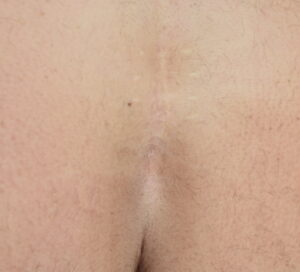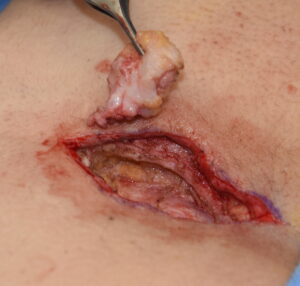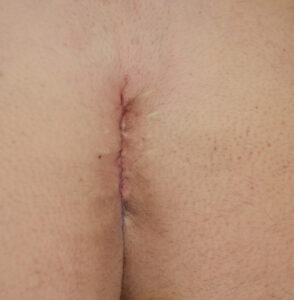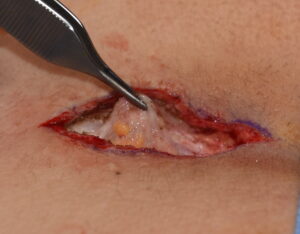Background: The intergluteal cleft is a well recognized feature of the buttocks and is more commonly known as the ‘butt crack’. It is the linear groove between the buttocks that extends from the top[ fo the sacrum down to the perineum. Anatomically it represents the medial border of the gluteus maximum muscle attachments to the bone. It can have various depths based on the overall size of the buttocks and the thickness of its muscle and fat components.
Loss of the intergluteal cleft can almost only occur from prior surgery that uses an intergluteal incision. In aesthetic surgery it is a well respected anatomic feature when performing buttock implants in which a midline intergluteal incision is used. In general surgery intergluteal incisions for pilonidal cyst surgery are used. I have seen blunting of the intergluteal cleft from both surgeries which detachment of the overlying skin from the underlying bone. (sacral cutaneous ligament) Whether a true ligament actually exists can be debated but at the least there is the underside of the skin in close proximity to the fascia of the sacrum.
Re-establishment of a visible intergluteal cleft requires tacking down/re-adhering the underside of the skin to the tissues overlying the sacrum. Successfully doing so requires decreasing the underlying soft thickness (scar excision), creating a fresh tissue margins at the skin and deeper levels and a secure dermal-fascial suture fixation.



The key determinant of the success of intergluteal cleft creation is one of months, not days or weeks. Thus the patient must be careful in how they sit as well as in physical activities for 4 to 6 weeks after surgery. It is very possible to disrupt the sutural adhesion before the development of scar tissue makes them irrelevant. If the cleft has persisted until that postoperative time period then it is safe to return to all normal activities.
Highlights:
- Loss of the intergluteal cleft most commonly occurs from prior surgeries.
- Intergluteal loss presents as an apparent union between the two buttocks with visible webbing on buttock cheek spreading.
- Re-establishment of the intergluteal cleft requires the dermal edge of the skin to be tacked down to the sacrum/coccygeal fascia.
Dr. Barry Eppley
Indianapolis, Indiana Plastic



